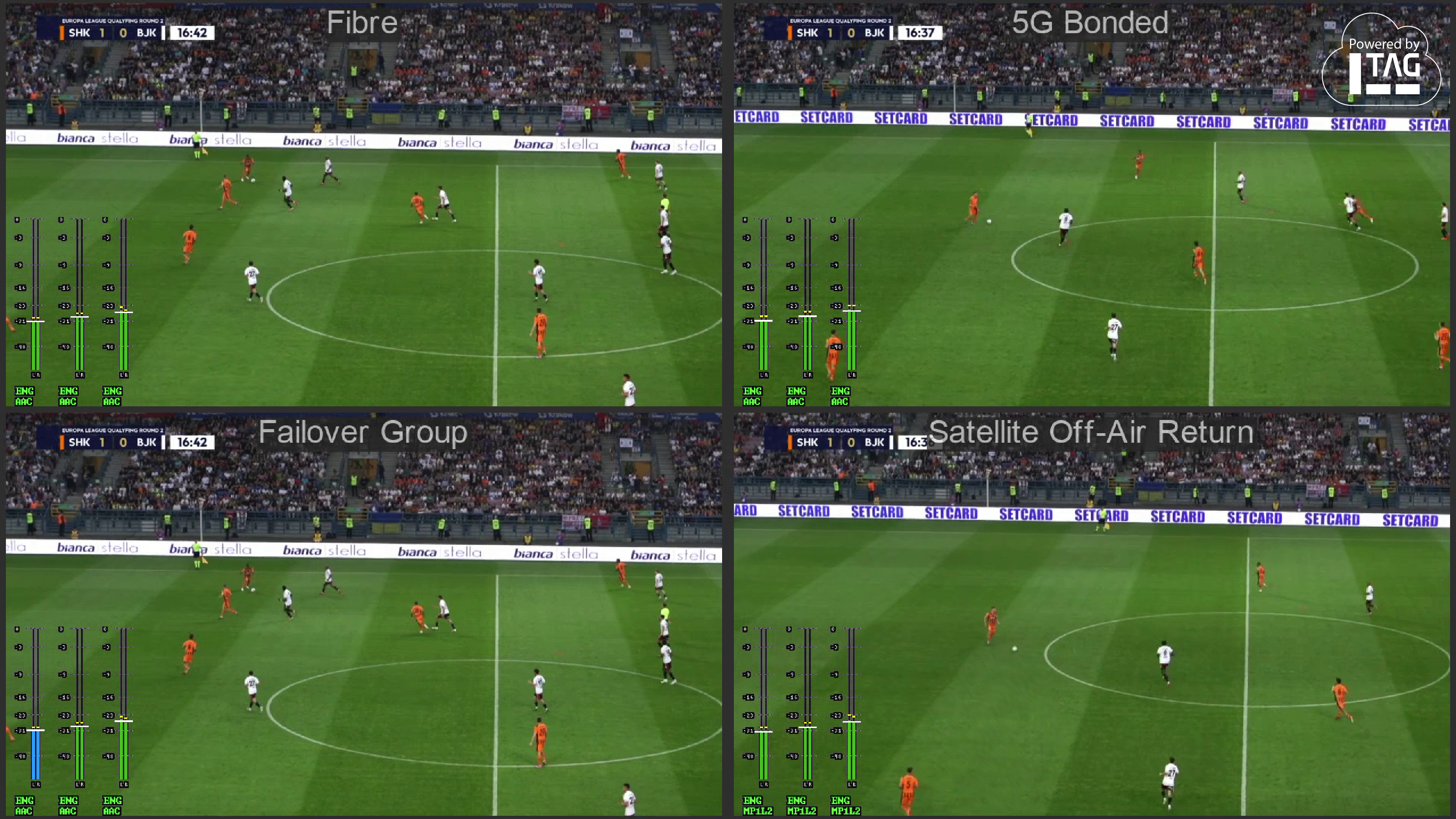 Millions of viewers around the world watched the UEFA Europa League qualifier match between Ukraine’s Shakhtar Donetsk and Turkey’s Besiktas. Unusually, this match was transmitted from site using the public internet and 5G, and managed entirely within the cloud. Let’s take a look at how it was done, with our low-latency encoders and 5G Flyaway product playing a key part.
Millions of viewers around the world watched the UEFA Europa League qualifier match between Ukraine’s Shakhtar Donetsk and Turkey’s Besiktas. Unusually, this match was transmitted from site using the public internet and 5G, and managed entirely within the cloud. Let’s take a look at how it was done, with our low-latency encoders and 5G Flyaway product playing a key part.
Traditionally, matches like this are delivered using a combination of private fibre and satellite. However, this match was delivered using new technologies.
Transmission Paths
Venue internet was used as the first path using our low-latency encoders. While venue internet is usually reliable, it is not a managed service with any form of guarantees. Therefore, our 5G Flyaway product was used to provide a backup feed in case of any issues with the primary path. It was configured with a longer latency to allow for correcting potentially more packet loss and jitter compared to wired internet. This 5G feed delivered a broadcast-quality CBR transmission using Zixi in exactly the same way as the wired internet. A backpack-style 5G solution would not have been CBR and would have required proprietary transport and management – we have written about this topic in another blog post. 5G connectivity was provided by Webbing, meaning no local SIMs were needed and there was no anxiety about data caps.
(Note: It was considered acceptable in this instance to have a lower-latency primary path and a higher-latency backup path even if this would cause some picture disturbance during a failover. A seamless approach could also have been possible with other tradeoffs.)
Cloud Processsing
 The Cerberus Tech Livelink platform, hosted in AWS, managed the two flows, providing automatic failover capabilities if the primary path went down. Beyond orchestrating the contribution streams, it also ensured distribution to SRT takers and delivered the streams to Globecast, which provided satellite uplink onto Eutelsat 7B, ensuring a global reach – seventeen takers in total.
The Cerberus Tech Livelink platform, hosted in AWS, managed the two flows, providing automatic failover capabilities if the primary path went down. Beyond orchestrating the contribution streams, it also ensured distribution to SRT takers and delivered the streams to Globecast, which provided satellite uplink onto Eutelsat 7B, ensuring a global reach – seventeen takers in total.
In addition, a few takers were not able to receive broadcast feeds, but wanted web-grade HLS feeds. Livelink was able to spin up a transcoder in the cloud and transcode to HLS for the takers. No on-premises equipment was needed for these processes. They were spun up entirely in the cloud for the duration of the match.
Monitoring
The final piece of the puzzle was a cloud-based monitoring system using a four-tile TAG Video Systems cloud multiviewer, which provided real-time insights into all the transmission paths by monitoring various feeds: fibre, 5G, failover output, and satellite off-air. This multiviewer was delivered back to the onsite production in Krakow, giving the production confidence that takers were receiving the signal reliably. Again, this multiviewer was spun up in the cloud for the purposes of monitoring the various feeds.
Conclusion
A match like this with seventeen takers is usually delivered using traditional technologies such as private fibre and satellite, and managed from an on-prem facility with large amounts of equipment and personnel. This match was different – it was managed and processed entirely in the cloud with processes spun up for the duration of the match.
Learn more about how our 5G Flyaway is providing broadcast quality transmission over 5G: https://www.obe.tv/5g-flyaway/
Learn more about Cerberus Livelink: https://www.cerberus.tech/selfserve/

